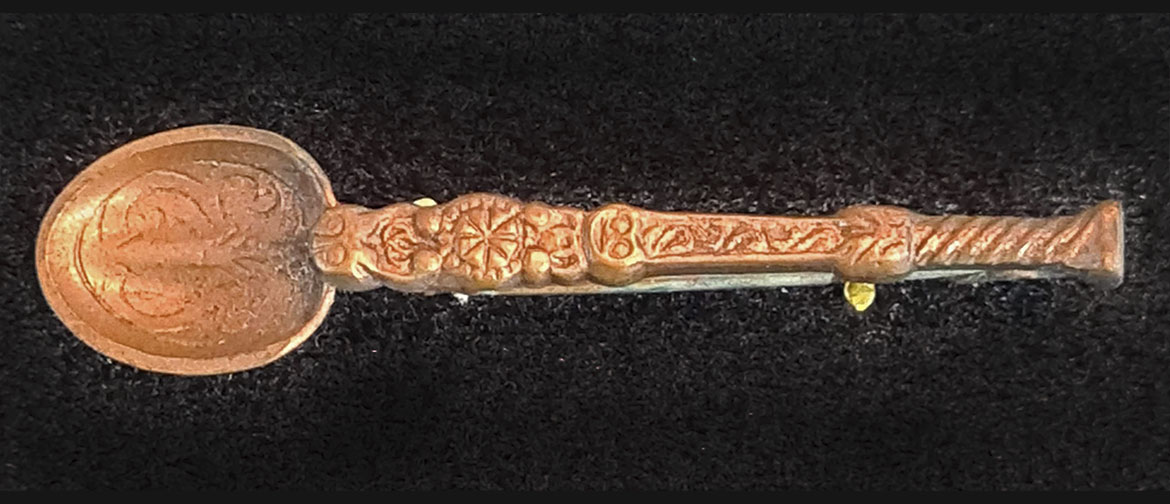Of all the coronation-related items in the Te Manawa collection, at 4cm long this brass brooch is the smallest. It might also be the most unusual, because it’s not a flag or a portrait or a coat of arms, but a tiny spoon. It was most likely made in 1936, in anticipation of the May 1937 coronation of King Edward VIII.
Why a spoon? Was it meant to celebrate the coronation feast? Was it a wry tribute to the kitchen staff of Buckingham Palace? Alas, the jewellers of the 1930s would not choose such an occasion to be facetious.
No, our spoon is a miniature replica of the golden Coronation Spoon, a relic from the 12th century that has been used in the eponymous ceremony for more than 400 years. Many royal treasures met their end in the more tumultuous decades of English history, but the spoon endured to the present day. It is as much a part of English royal tradition as gilded crowns and trouble with family.
The spoon’s role in the coronation has origins in ancient ritual, back when the idea of kings was still new. In the Old Testament, the prophet Samuel chose kings of Israel – first Saul, then David – by anointing them with oil. It is unlikely that he used any kind of utensil, but centuries of Christian tradition expanded the ceremony to something much more elaborate than a quick dab of oil in the desert.
This part of the coronation has been mostly unchanged for hundreds of years. The Archbishop of Canterbury fills the spoon with oil blessed in Jerusalem. With his fingers he anoints the new monarch on their head, hands and chest (they skipped the last of those for 19-year-old Queen Victoria). The anointing is believed to confer God’s blessing. That’s what the Church says makes you a king, more than the things you wear or hold.
So that’s the story behind our spoon brooch, donated to Manawatū Museum in 1981. It’s not a mundane household implement or some ironic in-joke, but a symbol of the divine power behind the British monarchy.
It and the many others that were made are even more curious because they commemorate an event that never happened. Edward shocked Britain by abdicating in December 1936. His coronation was cancelled. The brooches became instant collectors’ items and museum pieces, and historians and royal watchers ever since have pondered one of the 20th century’s biggest “what ifs”.




